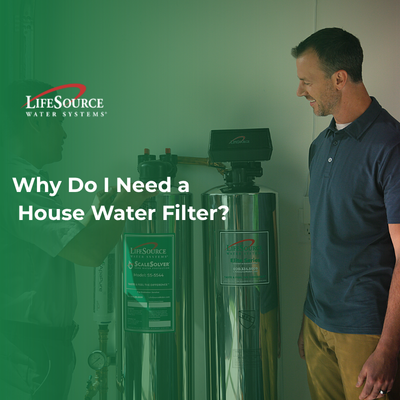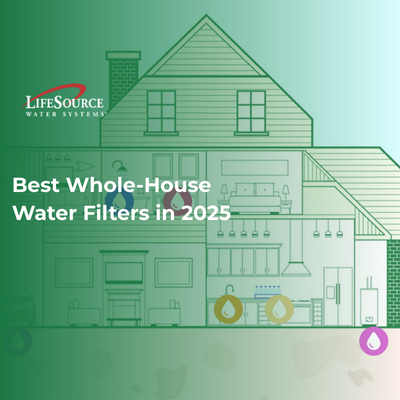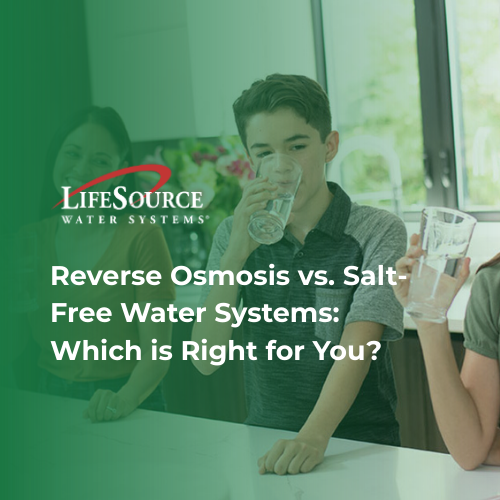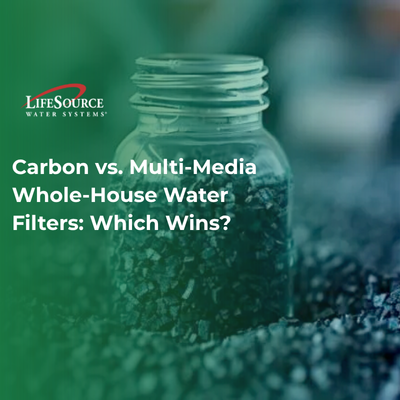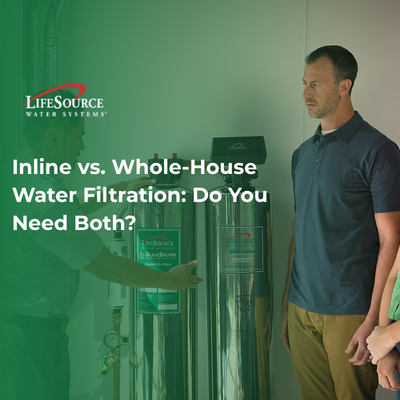
From the Water You Drink to Your House Plants, Transform your Home to Support Your Health

Depending on where you live, you may not be a fan of how your tap water tastes and smells. This is because around 98% of tap water in the United States is treated with chlorine and chloramines. Chloramine is a chemical formed when ammonia is added to chlorinated water. Water treatment plants add these chemicals to disinfect water before it travels to your home. The problem is, no one wants to drink water that smells and tastes like a swimming pool - much less bathe in it. Have you ever complained about itchy skin after a shower or how quickly your hair treatments fade? That’s because chlorine and chloramines can dry out your skin and hair. Filtering chlorine and chloramines from you water helps keep your skin properly hydrated and hair looking lush.
Chlorine and chloramines aren’t the only concern. As tap water travels through a maze of underground pipes, it can pick up dirt and other disinfection by-products (DBPs) along the way. DBPs are substances that occur when chlorine and chloramines react with the dirt, bugs or runoff that can be present in city pipelines. Certain DBPs, like chloroform, are carcinogenic. Even at approved regulated levels, the possible impact of DBPs over time can still be a cause for concern. This is why more and more people are taking control of their water quality by installing a whole house water system.
A salt-free whole house water system filters city water before it enters you home. This means every single drop of water that flows through your home is filtered. Having a home filled with filtered, great tasting water eliminates the need for bottled water, saving you time and money. By filtering the water in your home, you improve your everyday life and help reduce plastic waste!

From pollen and dirt, to car exhaust, the air we breathe is full of tiny particles. The air in your home can actually be more contaminated than the air outside. The products you use, the food you cook and even your furniture all affect the air quality inside the confinements of your home. A study done by the Environmental Protection Agency’s Office of Research and Development (EPA), found that the “levels of about a dozen common organic pollutants to be 2 to 5 times higher inside homes than outside, regardless of whether the homes were located in rural or highly industrial areas.”
One of the biggest contributors to the air quality in your home are the cleaners you use and the materials your furniture, rugs and linens are made from. Many common household cleaning products, air fresheners and furnishings can emit volatile organic compounds (VOCs) into the air in your home. VOCs are chemicals with varying short and long term health effects – including headaches and potential liver and kidney damage.
You can improve the air in your home by using non-toxic cleaning products and air fresheners. And eco-friendly, low-VOC paints, rugs and furnishings will help you to reduce the amount of VOCs in your home.
An air purifier helps keep the air in your home clean by filtering out pollutants, dirt, allergens and unwanted odors. If you have allergies to pollen or dust, purifying the air can help you breathe a little easier.
If you have a green thumb, you also might want to add a couple indoor plants. Many plants are naturally great at cleaning up the air! The popular Snake Plant helps filter toxins from detergents and paints (benzene), car exhaust (formaldehyde) and nail polish (toluene).

Take a moment to look around your home. Everyday items like food storage, kitchenware, bath towels and linens can all be geared toward making you home more eco-friendly.
One of the biggest culprits of unnecessary pollution is single use plastic. Plastic items like product or food packaging are plastics that you will eventually throw into the trash. From there, this plastic ends up in your local dump, where it sits for years. Once plastic is made, it never fully disappears. Most water bottles, containers and food packaging are made using PET (polyethylene terephthalate) plastic.
It takes over 400 years for that plastic to gradually degrade, getting smaller and smaller until it is microscopic. This micro-plastic is a growing concern for world scientists and health experts. Micro-plastic has even been found in the bodies of some fish. The less single use plastic you use, the less chance micro-plastic ends up in your sushi.
Look for products made from recycled and organic materials. You can use reusable bags or wax paper to store leftovers and pack lunches. Even little things like switching out dryer sheets for woolen dryer balls makes a significant difference in limiting the amount of toxins in your home.
Enjoy the Benefits of Detoxifying Your Home
Filtering your water, purifying your air and using eco-friendly products transforms your home into a healthy oasis for your family to grow, play and learn. You’ll be able to rest easy knowing your home supports the health and well-being of your family and the planet.


